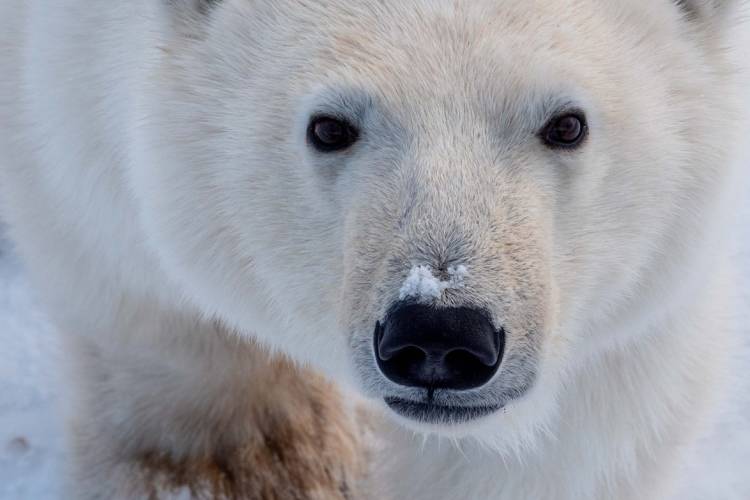Is the big takeaway that after years of stating that there are 19 subpopulations of polar bears, we now have 20?
It’s one of the key takeaways, although there was much discussion about the potentially transient nature of some of these changes in populations, too. Because when you look at it in a broader Arctic sense, we’re starting to see climate-driven changes in habitat use and ranges in polar bears and other wildlife populations. And the follow-up question is: How stable will those changes be?
So this is a reflection of behavioral and ecological changes as a result of global warming and sea ice loss?
That’s the premise. That being said, East Greenland polar bears broadly were the least understood in Greenland, simply because of the area’s remoteness and the cost of working there. So a lot of credit is due to Greenland for making the investment financially and in terms of capacity, to dig into this and then to recognize early on that, “Hey, there’s something happening here. We should look at it more closely.” So they followed up with genetic research and attaching radio collars to bears to figure out their movements. Collars aren’t always very popular these days, but this was a really, really nice case for using them.
Another important and contentious issue at the meeting was the changes in Nunavut’s approach to harvesting polar bears. Can you explain in layman’s terms what that’s all about?
In Nunavut, communities are experiencing an increase in the number of polar bear encounters and a perceived increase in conflict, which tragically has included a couple of fatalities. And the Nunavut government has responded by deciding to reduce the 12 polar bear populations within its territory, a decision that impacts two-thirds of the world’s polar bears, including some populations, like Western Hudson Bay, that are struggling, and other populations that are shared with adjacent provinces and countries.
On paper, it isn’t unreasonable for a management authority to say, “Based on an increase in the number of polar bears, which has led to some serious and indeed fatal incidents, we’ve decided to reduce populations.” What’s concerning is the approach they took.
Scientists have long predicted that communities would see more polar bears in a warming Arctic as melting sea ice forced more bears ashore. But seeing more bears doesn’t mean there are more. Nunavut made a “one size fits all” unilateral decision that did not square with available data on population trends. Nor did it set adequate safeguards against overharvest.
What’s more, going from allowing one female to be killed for every two males to allowing one female for every male is a significant change biologically. If you’re taking a reproductive female, that’s a bigger population impact than taking a male. The number of males is less important from a recruitment standpoint than the number of females in total population success. Females are the main reproductive engine of populations. Hence, taking more of them is a significant management change.
Another factor is that this applies to all 12 subpopulations in Nunavut, regardless of status. Then there’s the issue of, “OK, you’ve made this management decision. You want to lower populations – but by how much? What’s the goal? And when you hit that target, how do you know you won’t overshoot it? Is there a plan to return to a two-to-one ratio afterward?”
But, in fact, there are no clear statements of population targets for each subpopulation. There is no clear and robust monitoring plan to specifically assess the new approach. Especially when you’re making a fairly dramatic change, you’d think that would typically trigger more robust and frequent monitoring, and that’s not yet the case. So all that being said, it raises valid concerns that Canada broadly, but Nunavut specifically, is now managing polar bears in a way that may not be considered sustainable. And that could have a huge impact given that Canada is home to two-thirds of the world’s polar bears.


















